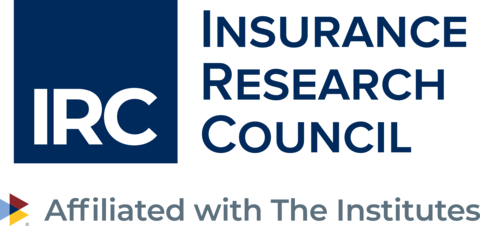Personal Auto Insurance Affordability is Better Than in the Mid-2000s, Even with Recent Increases, IRC Study Reveals
Personal Auto Insurance Affordability is Better Than in the Mid-2000s, Even with Recent Increases, IRC Study Reveals
MALVERN, Pa.--(BUSINESS WIRE)--The affordability of personal auto insurance is estimated to have deteriorated from 2021 through 2024 as insurance companies increase premiums to offset inflationary loss pressures, according to an updated study from the Insurance Research Council (IRC), an affiliate of The Institutes. Despite this recent deterioration, auto insurance is more affordable than in the mid-2000s.
Looking at long-term trends, personal auto insurance affordability improved over the past two decades, according to an IRC study.
Share
Auto Insurance Affordability: Countrywide Trends and State Comparisons looks at the average auto insurance expenditure as a percent of median income, which ranges from a low of 0.93% in North Dakota to a high of 2.67% in Louisiana.
In 2022, the most recent year for which data are available, average expenditures were $1,127, and median household income was $74,580. Thus, U.S. households spent 1.51% of their income per vehicle on auto insurance, a slight increase from the previous year.
Looking at long-term trends, auto insurance affordability improved over the past two decades. Between 2000 and 2022, median household income grew somewhat faster than auto insurance expenditures, causing the expenditure share of income to decline from 1.64% in 2000 to 1.51% in 2022. In other words, auto insurance was somewhat more affordable in 2022 than in 2000.
“With the recent increases in insurance costs, affordability is projected to deteriorate in 2023 and 2024,” said Dale Porfilio, FCAS, MAAA, president of the IRC. “The expenditure share is projected to increase to approximately 1.6% in 2023 and 1.7% in 2024, a significant increase from the low in 2021 but still below the peak of 1.9% in 2003.”
Although Florida was the second least affordable state for auto insurance in 2022, the state has made recent progress to improve affordability. In 2022 and 2023, Florida passed several key reforms that have led to significant decreases in claims lawsuits, and increases in the number of insurers in the market, among other positives, according to the Insurance Information Institute’s (Triple-I’s) research, Trends and Insights: Florida Reforms Bear Fruit as Premium Rates Stabilize.
The affordability of auto insurance is ultimately determined by the key underlying cost drivers in each state. They include:
- Accident frequency: Varying traffic density, road conditions and other factors lead to more frequent accidents in some states.
- Repair costs: The cost of repairing vehicles varies across states.
- Tendency to file injury claims: The propensity to file an injury claim tends to be higher in less affordable states.
- Injury claim severity: The amount paid per claim for auto injury insurance claims is a key cost driver.
- Expense Index: The amount insurers spent to process, investigate and litigate claims (loss adjustment expenses) as a percent of incurred losses.
- Uninsured motorists: High rates of uninsured motorists can be both a symptom and a cause of a system with affordability challenges.
- Underinsured motorists: High rates of underinsured motorists can be both a symptom and a cause of a system with affordability challenges.
- Claim litigation: Reflects the percentage of personal auto claims with litigation.
Porfilio, who is also chief insurance officer of Triple-I, an affiliate of The Institutes, noted that “while state-level data cannot directly address affordability issues among traditionally underserved populations, collaborative efforts to reduce these key cost drivers can improve affordability for all consumers.”
About Insurance Research Council
The Insurance Research Council (IRC), an affiliate of The Institutes, is an independent, nonprofit research organization supported by leading property and casualty insurance companies and associations. IRC provides timely and reliable research to all parties involved in public policy issues affecting insurance companies and their customers. IRC does not lobby or advocate legislative positions.
About Triple-I
Since 1960, the Insurance Information Institute (Triple-I) has been the trusted voice of risk and insurance; providing unique, data-driven insights to educate, elevate and connect consumers, industry professionals, public policymakers and media. An affiliate of The Institutes, Triple-I’s diverse membership accounts for nearly 50% of all property/casualty (P/C) premiums written in the U.S. Its members include mutual and stock companies, personal and commercial lines, primary insurers and reinsurers. They have regional, national and international customers.
About The Institutes
The Institutes are a global not-for-profit comprising diverse affiliates that educate, elevate, and connect people in the essential disciplines of risk management and insurance. Through products and services offered by The Institutes’ nearly 20 affiliated business units, people and organizations are empowered to help those in need with a focus on understanding, predicting, and preventing losses to create a more resilient world.
Contacts
Media Contact:
Loretta Worters
New York Press Office
917-208-8842
lorettaw@iii.org
